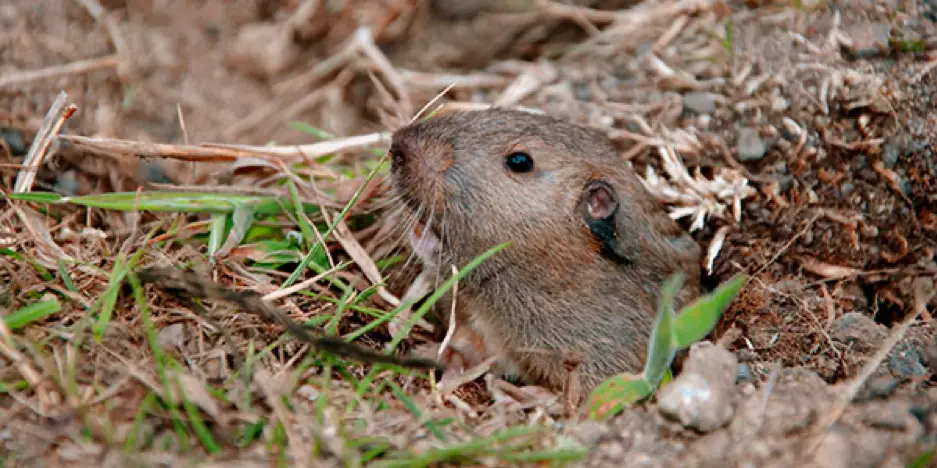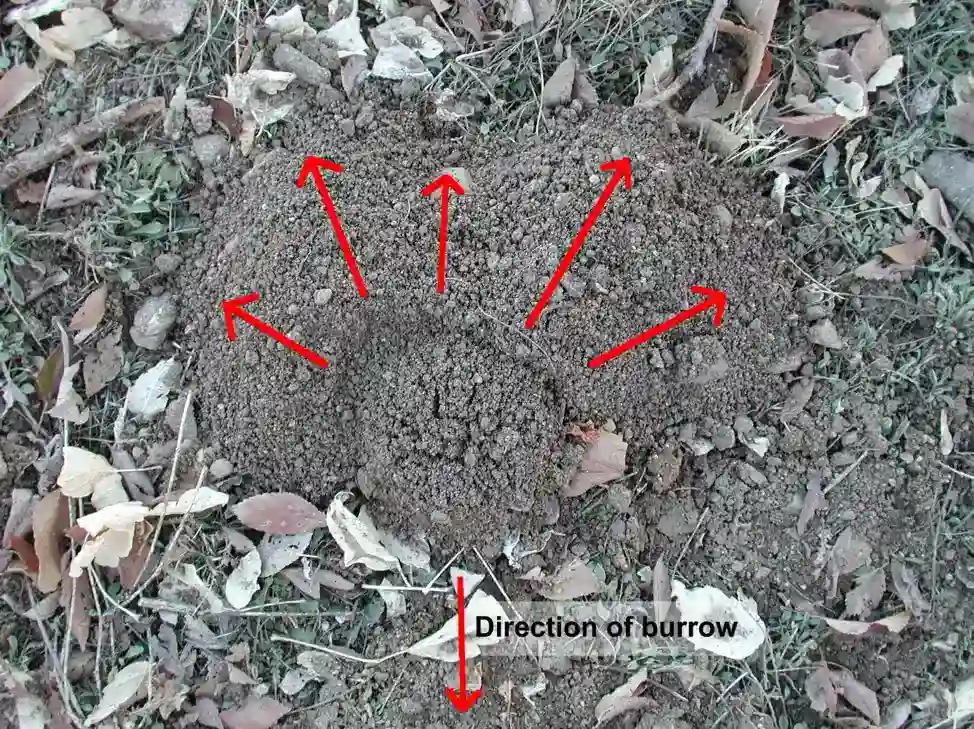What is a gopher?
Maricopa County | Pima County | Yavapai County | Coconino County | Pinal County
Pocket gophers are the most common type of gopher in the Phoenix area. They are medium-sized rodents, measuring 5-14 inches in length with fine brown fur. Pocket gophers get their name from the unique cheek pouches they use to carry food, located on the exterior of their bodies. Spending the majority of their lives underground, pocket gophers create elaborate tunnels that can extend as far as 200 yards. Tunnels are marked by a series of mounds that appear to be created, then plugged up with looser soil. This strategy allows gophers to seal their environment against inclement weather and prevent threats from entering. Most gophers are solitary, only joining another during mating season.

Their tunneling activity is often considered beneficial to the environment. Because they move large amounts of soil underground, gophers help mix in beneficial elements into the otherwise undisturbed land, improving soil fertility. Unfortunately, pocket gophers can quickly become a massive pest issue for homeowners that suffer from destructive tunneling on their property.
What is the difference between gophers and ground squirrels?
Both pocket gophers and ground squirrels are big concerns for local Phoenix area residents. If you see mounds pop up around your property, you could be wondering if you see evidence of pocket gophers or ground squirrels. The best way to differentiate the two is by examining their mounds. Pocket gophers plug their holes with loose soil whereas ground squirrels leave their mounds open, with leftover dirt from initial excavation surrounding the exterior of the hole.
You may catch a glimpse of a ground squirrel above land contrary to pocket gophers that live primarily within their underground tunnels. Ground squirrels look like smaller prairie dogs or chipmunks, quickly scurrying around in the early morning and late afternoons primarily. To learn more about ground squirrels, click here.
Why do I have gophers at my house?
Soil is the primary factor when considering gopher nesting. They need moisture to be present, making arid soil without clay the least idea environment. If soil is too dry, the likelihood of a cave-in is higher than with wetter conditions. Their presence increases in the fall and spring, but they are present all year-round because they do not hibernate.
Vegetation could be drawing gophers to your yard. Pocket gophers are vegetarians that eat roots, tubers, ornamental plants, grasses, and alfalfa. A lot of homes in the East Valley have these plants on their property, which creates a suitable environment for gopher nesting. It’s not only your property that can fall victim to pocket gopher tunneling. They are also pests for golf courses and farms where the soil is well taken care of.
Why should I be concerned with gophers?
It goes without being said that gophers destroy yards and gardens. As they tunnel and build their network of underground pathways, gophers create exit points, often referred to as mounds. Mounds allow gophers to surface and search for food. By using their sharp teeth and long claws, a single pocket gopher can move over a ton of soil in a single year. This means 1-3 tons can be moved in a pocket gopher’s lifetime of 1-3 years.

Because pocket gophers spend the large majority of their lives underground, you probably won’t see them wandering around. The best way to determine if you have pocket gophers tunneling on your property is to take a look at the mounds they create. Pocket gopher mounds are created as exit points above the tunnels. Unlike other rodents, pocket gophers create a fan pattern when they surface, as shown by the red arrows at the top of the above image. The hole is then loosely plugged with soil, as you can see at the center of the mound shown above.
If left unaddressed, gophers can break utility pipes and electrical conduits laying underground, causing significant damage to your property and potentially hazardous conditions. When they eat roots, pocket gophers can destroy vegetation. Gophers can bite if provoked, but they are not prone to aggressive behaviors such as chasing. For this reason, we highly discourage handling gophers on your own.
How can I prevent gophers at my house?
Never try to handle pocket gophers or attempt to get rid of them on your own. As previously mentioned, you can easily get bitten when directly handling them. Always call SOS Exterminating to handle your pocket gopher issues professionally. Aside from human intervention, pocket gophers have several natural predators that are native to the Phoenix, AZ area. Snakes, birds, badgers, foxes, and coyotes are all predators to pocket gophers.
How does SOS Exterminating get rid of gophers?
SOS Exterminating creates customized plans for pocket gopher control based on the unique situation you are dealing with. Give us a call at 480-571-1425 or fill out the form on this page for a free inspection!
What Are Gophers Professional Pest Control Services in Gilbert, AZ?
Serving Maricopa County | Pima County | Yavapai County | Coconino County | Pinal County

 480-497-1500
480-497-1500 